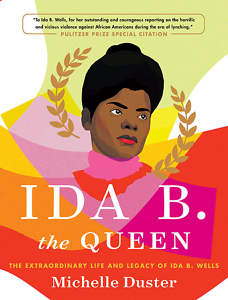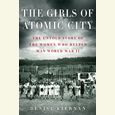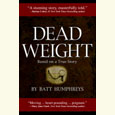The Light of Truth
Michelle Duster delivers an intimate biography of Ida B. Wells
Ida B. the Queen: The Extraordinary Life and Legacy of Ida B. Wells offers a fresh, relevant take on the anti-lynching activist, who was born into slavery in 1862, first gained fame as a journalist in Memphis, and spent much of her life in Chicago. Author Michelle Duster, who is Wells’ great-granddaughter, moves beyond traditional biography, weaving Wells’ history with her own memoir. She writes flavorful vignettes of middle-class Black life in Chicago and the milieu that pushed her toward her ancestor’s legacy. She also highlights the way her own existential crisis (not being married by her mid-30s) led her to a deeper kinship with her great-grandmother. The result is an intimate, though not sentimental, experience of Wells’ story.

The title of the book appears to have been inspired by Bettiola H. Fortson’s 1913 poem “Queen of Our Race.” It was penned about Wells following that year’s suffragist march on Washington. The Black suffragists were asked to remain at the back of the parade. Wells pretended to consent until the moment the processional began, at which point she appeared front and center. Thus, Fortson writes: “Who set the nation on fire with her pace / And the Heroine will be the Queen of our race.” Duster chronicles the incident to illustrate Wells’ multifaceted resistance.
Of course, Wells is most widely known for her writing, and Duster emphasizes that she was avant-garde in what would become the field of investigative journalism. Wells began her career as one of a dozen Black female journalists working at approximately 200 Black newspapers nationwide. The book recounts her climb through various aspects of adversity: her gender, class, and race. In the same vein, Duster considers Wells an early intersectional thinker, pointing out that she was vocal about the importance of Black women’s involvement in suffrage; white women could not be expected to carry the concerns of all women forward, as tensions around race and class frequently hindered suffrage campaigns.
The writing in Ida B. the Queen is straightforward and accessible, aimed at a wide audience. Each chapter features a few information banners, which serve to prime the reader on a particular theme. They also offer further insight into Wells’ sociological and political climate and how it differs from our own. For example, a primer on Republicans versus Democrats chronicles the parties’ ideological shifts in the 1960s, as the so-called Southern Strategy drew the region’s white Democrats — who were unhappy about civil rights and integration — into the Republican Party. Readers might approach the text with biographical interest in Wells, but they will likely leave with a fuller understanding of the urgency and legacy of her work.
 Serving a similar function are the artfully rendered portraits and photographs of historical figures, offering an iconographic reminder for those far removed from grade school. Readers will encounter skillful profiles of individuals such as W.E.B. Du Bois, Ella Baker, and Jesse Jackson. In several instances, Duster connects Wells’ history with those profiled. And she does so with aplomb; for instance, she juxtaposes a recounting of Wells’ supposed personal impropriety with a profile of Recy Taylor and her 1944 sexual assault. These, in turn, are given further contemporary relevance when Duster compares them to the 2014-15 alleged sexual assault of Black women by police in Oklahoma.
Serving a similar function are the artfully rendered portraits and photographs of historical figures, offering an iconographic reminder for those far removed from grade school. Readers will encounter skillful profiles of individuals such as W.E.B. Du Bois, Ella Baker, and Jesse Jackson. In several instances, Duster connects Wells’ history with those profiled. And she does so with aplomb; for instance, she juxtaposes a recounting of Wells’ supposed personal impropriety with a profile of Recy Taylor and her 1944 sexual assault. These, in turn, are given further contemporary relevance when Duster compares them to the 2014-15 alleged sexual assault of Black women by police in Oklahoma.
Several of the comparisons might garner raised eyebrows from readers, such as the unlikely parallel Duster draws between Wells and Sister Souljah, who offered an unpopular opinion regarding Black militancy in 1992, to the dismay of her political allies. In like manner, Wells lost an early writing position due to her “extremist” views. Duster concludes: “Sister Souljah, like many others, was following in the long tradition set by Black women like Ida B. Wells.”
Duster finds both broad and particular similarities between pressing issues during Wells’ lifetime and those of the present day. The racial backlash that ended the Freedmen’s Bureau in 1877 is strikingly similar to the “whitelash” that occurred following Barack Obama’s presidency. Particularly apt is Duster’s comparison of the Wilson and Trump administrations. Both presidents, Duster notes, capitalized on working-class Americans’ economic instabilities and racial biases for political gain.
This book arrives at a time when a new kind of journalism is emerging — one that empowers the layperson to become a reporter. Through the use of camera phones and live features of social media apps, recent years have seen numerous accounts of brutality captured and transmitted. This is all in the spirit of Ida B. Wells: “The way to right wrongs is to turn the light of truth upon them.”

Kashif Andrew Graham is a writer and theological librarian. He enjoys writing poetry on his collection of vintage typewriters. He is currently at work on a novel about an interracial gay couple living in East Tennessee.


